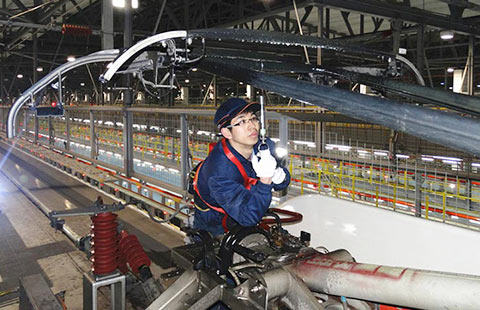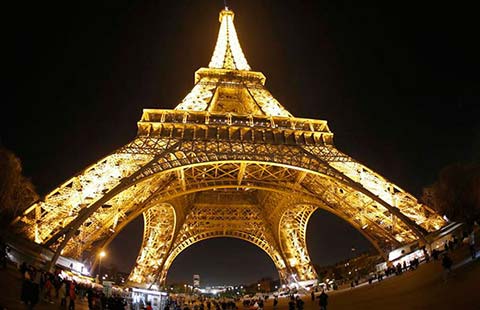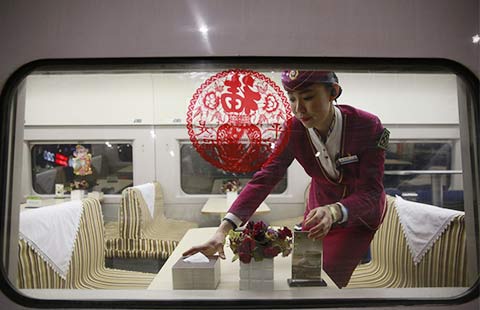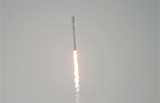Poor Europe-Asia land routes hinder trade
By CUI JIA in Urumqi (China Daily) Updated: 2012-09-05 03:12Inefficient transport links prove costly for businesses
Inefficient land transportation between Europe and Asia has become a key barrier in trade between the two continents, according to international logistics experts.
"Many Eurasian countries have experienced difficulties in trade growth because of poor connectivity with each other," said Babar Badat, vice-chairman of the International Federation of Freight Forwarders Associations, at a logistics development forum on Monday.
The forum was hosted at the Shanghai Cooperation Organization Business Day, which was part of the second China-Eurasia Expo that opened in Urumqi, capital of the Xinjiang Uygur autonomous region, on Sunday.
The SCO is a permanent intergovernmental international organization founded in 2001 in Shanghai by six nations — Kazakhstan, China, Kyrgyzstan, Russia, Tajikistan and Uzbekistan. The group's aim is to promote cooperation in politics, trade and business.
Although the road and railway systems connecting Asia and Europe have been improved, road transportation is still not effective, the experts said.
Li Yuwei, chief of transport division of UN Economic and Social Commission for Asia and the Pacific, said the nations’ different types of entry permits and their restrictions on transit operations make the clearance process a major headache.
"Goods carried by road often have to be trans-shipped at border areas or loading points along a designated route, which adds needless costs and delays to the transport process," he said.
Also, although the clearance procedure at some countries' ports have been simplified and the time to clear customs has shortened, more checkpoints have been set up, which creates more delays,
Li added that visas for professional drivers is another issues that needs to be resolved.
"Professional vehicle drivers have to go through complicated procedures to apply for visas and are generally granted only a single-entry visa each time," Li said. "In some countries, drivers are required to apply for visas in person at embassies to either obtain a visa or learn that their applications have been rejected, which causes delays in the delivery."
"Countries involved in the operation of the road network must work together to create a framework and share the same standards and regulations to support international transportation," he said.
Li Jinzao, vice-minister of commerce, said on Monday that the cost of trade inconveniences could be as high as three times that of tariffs.
"Although rail transportation between China and Europe is around 15 days compared to 35 days by ocean shipping, the cost is high because the trade volume is still low," said Che Tanlai, a researcher at the Economic Planning Institute of the Ministry of Railways.
Since the Eurasian Land Bridge was completed and put in operation in 1992, annual rail transit volume increased from a few hundred thousand tons to more than 15 million tons.
The China-Kazakhstan railway transported about 9 million tons of goods in July this year, an increase of 6 percent year-on-year, China's imports consists of 63 percent of the goods moved.
Most of the imports from Xinjiang’s Alashankou railway port, in northeastern China , which borders Kazakhstan, are metal ore, cotton and grains, a fact that reflects China’s need for resources.
Meanwhile, metal products exported from the port have almost increased fivefold year-on-year, which shows that more value-added products have been delivered to Eurasian countries, Che said.
On Aug 31, the 11,179-km Chongqing-Xinjiang-Europe International Railway, honored as "the modern Silk Road", was officially put into operation. It starts in Chongqing, crosses the Alataw Pass on the China-Kazakhstan border of, and then travels through Russia, Belarus and Poland before arriving in Duisburg, Germany. The whole journey takes an average of 16 days.
Moreover, from Chongqing to Europe, customs declaration and inspection are processed only once, a great convenience for shippers.
Eurasian countries should speed up building major transport routes, including the highway linking western China and Western Europe, the China-Tajikistan highway and the China-Kyrgyzstan-Uzbekistan highway and railway, Premier Wen Jiabao said on Sunday.
cuijia@chinadaily.com.cn
- Alibaba needs to think big on world stage
- Jack Ma eyes acquisitions to weave his magic again
- PBOC injects yet more pre-holiday money into market
- China stops approving new coal mines
- Chinese tourists expected to become most powerful buyers in winter season
- China tops world in PV installation capacity
- Chinese Premier vows to deepen reforms
- China retains as Malaysia's largest trading partner in 2015
















